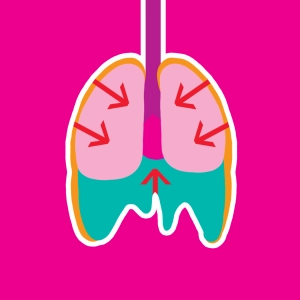 Video: Respiratory movements
Video: Respiratory movements
In the course of pulmonary respiration, the air in the lungs must constantly be renewed. This is what is called pulmonary ventilation.
But how is it that air enters and leaves the lungs?
(…)
This is done thanks to the movements of the thoracic cage, which includes the ribs and the sternum, the intercostal muscles and a large muscle called the diaphragm.
(…)
The lungs are fixed to the interior of the thoracic cage by the pleura.
(…)
During inspiration, the intercostal muscles and the diaphragm contract, causing an enlargement of the thoracic cage.This results in the expansion of the lungs and, consequently, the flow of air into the lungs via the respiratory passages.
(…)
In the reverse process, during expiration, the intercostal muscles and the diaphragm relax, and the volume of the thoracic cage decreases. This results in a deflation of the lungs and, consequently, the exiting of air from the lungs.
(…)
To measure the amount of air entering and leaving the lungs we must use a spirometer.
In an adult, one can thereby measure the entry and exiting of 0.5 liters of air under normal breathing conditions (*). As for forced respiration, this involves the inspiration and expiration of the maximum amount of air. In this case, the spirometer measures more than 3 liters of air.
(*) Pronounced “zero point five’
